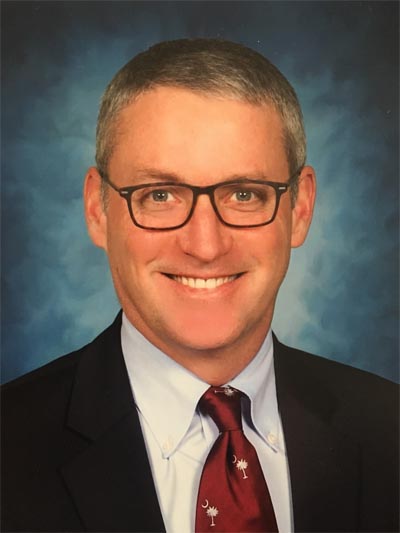Roper: Recent COVID infections steady, not spiking
By Jason Evans
Staff Reporter
jevans@thepccourier.com
PICKENS — Pickens County administrator Ken Roper said the COVID-19 pandemic is “the  challenge of our time,” but some recent numbers are “cautious good news.”
challenge of our time,” but some recent numbers are “cautious good news.”
Roper discussed COVID-19 data during a Facebook Live video Friday morning.
“After Memorial Day, we ramped up with a lot of cases, and this is when we were all getting worried again a couple of weeks back, back in late June and early July,” he said. “Now, the new cases that are coming in seem to be somewhat consistent with the old cases falling off. So that’s really reassuring to us, but it’s something we have to keep watching.”
After the post-Memorial Day spike began to settle, case numbers began to rise again after the Fourth of July, Roper said.
“Maybe those things where we’re gathering together in big groups, maybe that causes a spike,” he said. “That’s what we’ve been being told for months, and the data seems to support that.”
As of Friday morning, there were around 400 active cases in Pickens County, “and we’ve maintained 400 or so active cases in the county for almost the entire month of July,” Roper said.
The recent data doesn’t show a spike or explosion in active cases, “but a pretty steady, widespread rate of infection,” he said.
“That’s good news, but it’s cautious good news,” Roper said. “We need to still keep practicing those things that we all know (work.)”
The Central-Clemson area is no longer leading the county in active cases, Roper said. The Easley area is.
“(The 29640 and 29642 ZIP codes) both have over 100 active cases just themselves,” he said. “Now we’re seeing Easley coming back to the fore as the numbers in Clemson and Central have dropped.”
Correlation does not mean causation, Roper said.
“Put another way, just because Clemson and Central passed mandatory masking doesn’t necessarily mean that it caused their numbers to start shrinking, but their numbers did start shrinking, so it is something we need to keep watching,” he said. “It certainly is interesting to see that they did that step, and once they did that step, their numbers began to drop.”
Hospital bed occupancy rates are “another number we need to watch,” Roper said.
“Hospital bed occupancy rate is really the whole point,” he said. “We don’t want the virus to grow so quickly in our communities so that our hospitals become overrun. That’s what happened in New York. That’s what happened in Italy. That’s what happened a little bit in California and Seattle. You had too many people getting too sick too fast.
“That’s what a lot of this is aimed to do, is to slow the spread so we can handle it with our hospital capacity,” Roper continued.
According to DHEC, as of Friday, South Carolina had a hospital bed occupancy rate of around 65 percent, he said.
“So what that tells us is we’re up (to) well over half of our hospital beds being used, but we’re not necessarily getting into critical space,” Roper said. “The other thing that tells me is that me and you and all our South Carolinians around us are making a difference by doing what we can. If we can keep that hospital bed utilization rate down to a manageable level, then we’ll have done what we can do for what it is the challenge of our time. So I want to encourage you to keep that going.”
Continuing to wear masks may seem difficult because the rewards aren’t immediately seen, he said.
“The reward’s not to you personally and it’s not one where you see a result immediately,” Roper said. “But we know from many voices out there that it’s the best tangible we can do, short of just staying home.”



























